
Andina Notting Hill: a restaurant with subtle Peruvian references
Andina Notting Hill: a restaurant with subtle Peruvian references
Share
Barcelona-based studio El Equipo Creativo has designed a new restaurant for Peruvian food chain Andina in London’s Notting Hill, which gives a subtle nod to the South American country. The studio describes its design process below.
The creative process started with a trip to Peru with the client to dive into the Andean culture and get inspired by colours, flavours, traditions and most of all by Picanterias, the restaurants at the heart of communities across the Andes.
The design team was impressed by the sense of family, the careful attention to detail and the passionate craftsmanship of these people. Picanterias indeed played a key role in the development of the design.
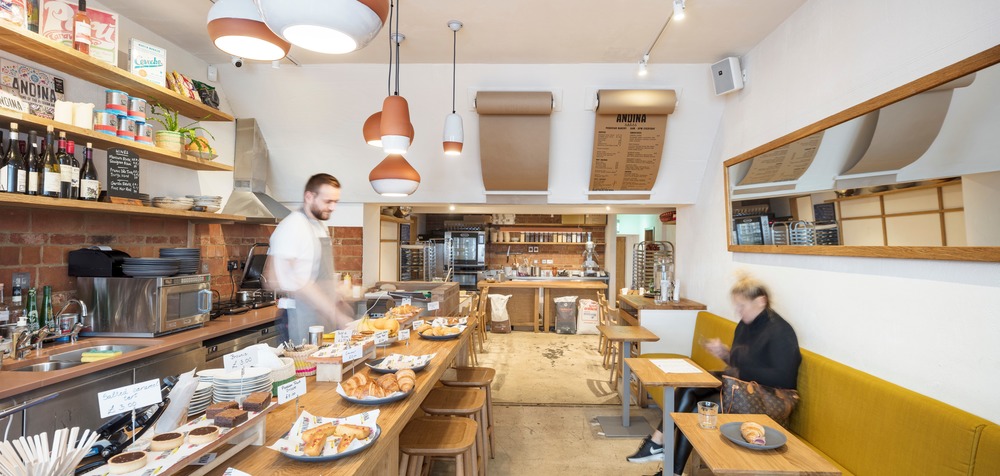
With this heritage in mind, the architects were committed to creating a design that embodies and personifies the real values of these places, and that could transport the guests of Andina to a journey to the chef’s grandmother’s kitchen in Peru. They aimed to mix discretion, simplicity and the handmade with London’s creative style.
The project, located in the neighbourhood of Notting Hill in London, consists of two main gastronomic spaces. On one side, the restaurant and on the other the café-bakery.
The design
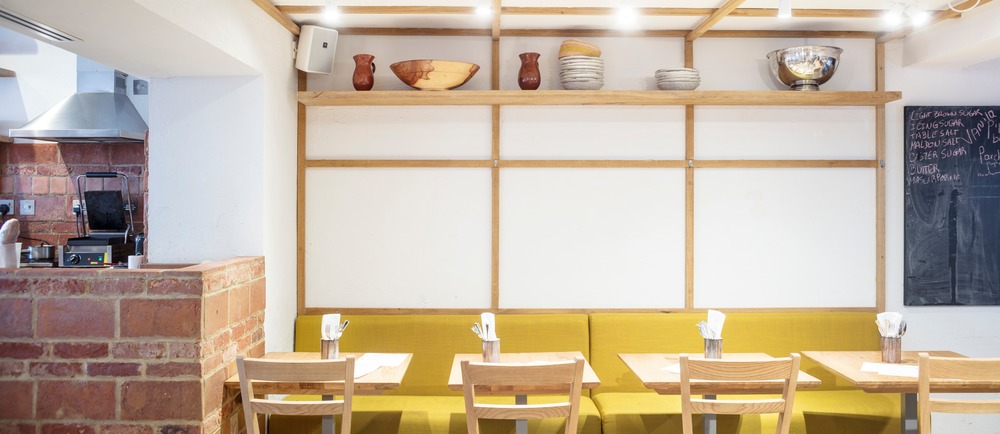
The clean design focuses on traditional materials like wood, ceramics, and stone and creates a unique and warm atmosphere where delicious and vivid food is the main character. Just a few touches of bright and vivid cherry, green and mustard yellow can be found in the upholstery and cushions of the lounge banquettes.
The interiors of the café-bakery, as well as the restaurant, are filled with light and visible to the passers-by thanks to the large bright windows.
The restaurant
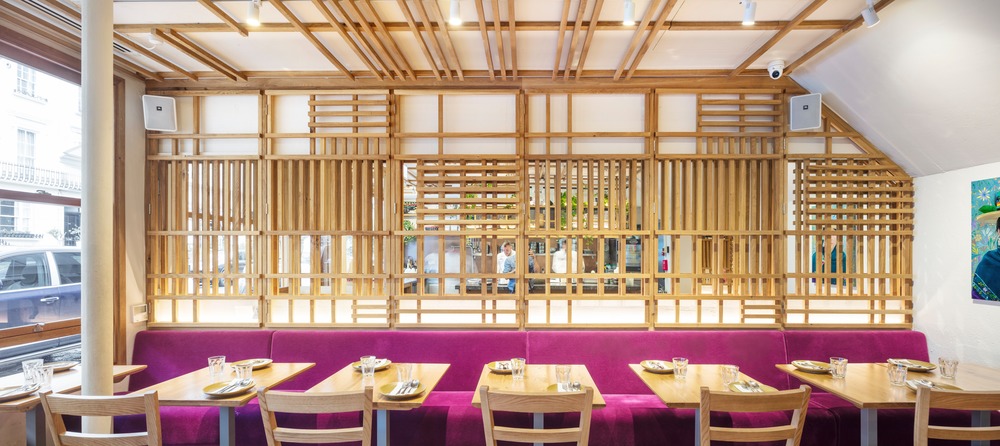
This space echoes the most traditional Peruvian Picanteria and so El Equipo Creativo proposed a design with no filters where the open kitchen, a home-style chef’s table, is visible to guests and people in the street.
The core of the project references a typical kitchen with light wood shelves, hanging pots and pans, plants, flowers and a dark orange rustic finish in the background that recalls the domestic hearth.
In this familiar environment, large tables acquire fundamental importance in defining the space. In the restaurant, there are two focal points: the open kitchen and the cocktail counter in the back. They recall the big traditional kitchen table, a shared space between those who are cooking and the guests tasting their colourful meals.
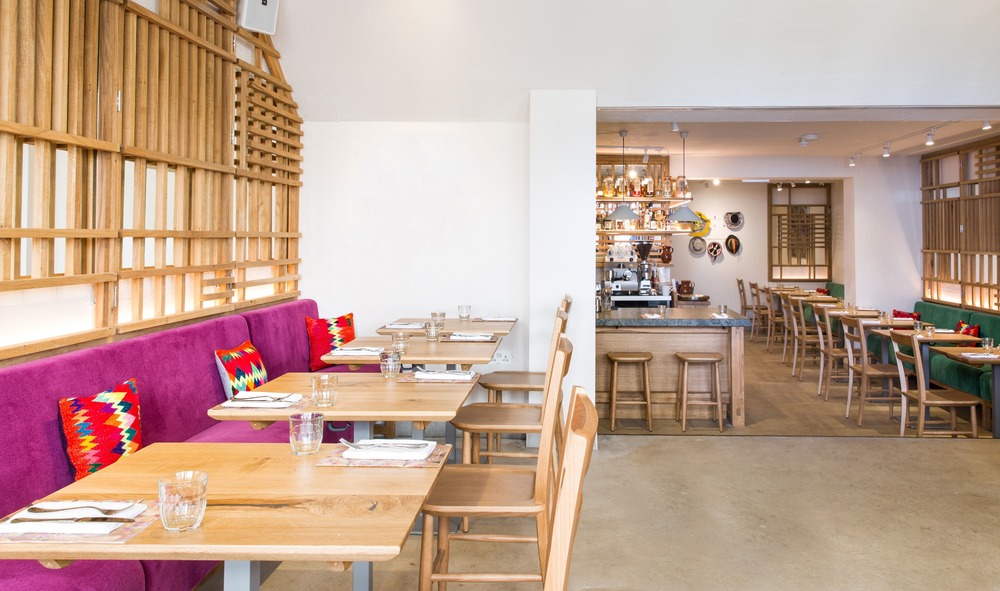
The tables have a wooden structure with granite stone countertop serving as a reference to the typical Peruvian kitchen table. Diners can see the dishes that are being prepared just like in most rural Picanterias.
Light oak lattices rise from the soft velvet banquette and create a screen on the ceiling, which is a modern homage to the common wicker feature of Andean Picanterias. The white walls and poured cement floor emphasise the brightness of the restaurant and the authentic and pure simplicity of things well designed and handmade.
The Café-Bakery
The café-bakery is all about craftsmanship. This bakery, or panaderia in Spanish, is designed as an enchanted world entirely dedicated to the subtle art of making things. In this context, the unusual combination of terracotta and wood stresses the handmade aesthetic.
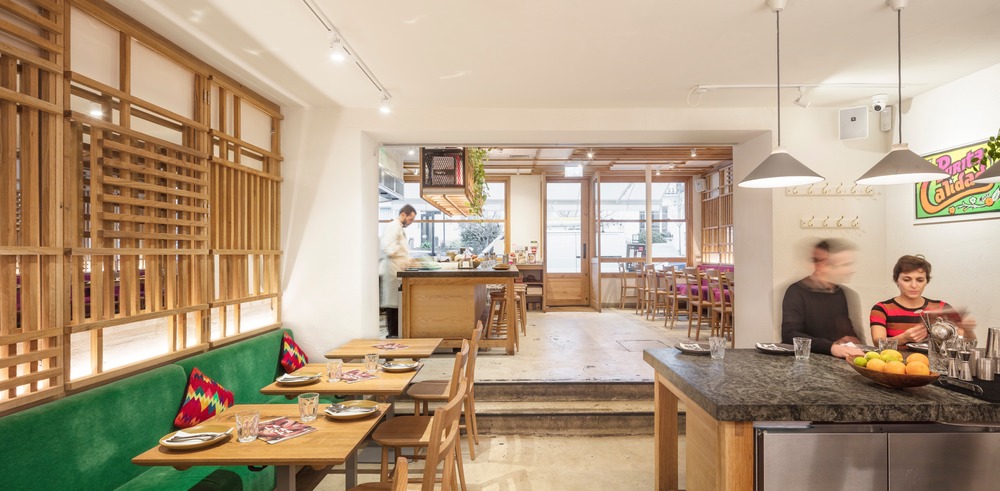
El Equipo Creativo wanted to create a feeling of artisan workshop in this space, and so we proposed natural materials and played with their textures. For example, there are bricks on the wall, wood tables, and clay quarts counters.
At the entrance of the café-bakery, there is a big bar where all the delicious pastries are on display, and in the back, the customers can see pastry chefs at work and the baking oven where the magic happens. The whole design plays on the hues of sienna with some splashes of yellow on the seating.
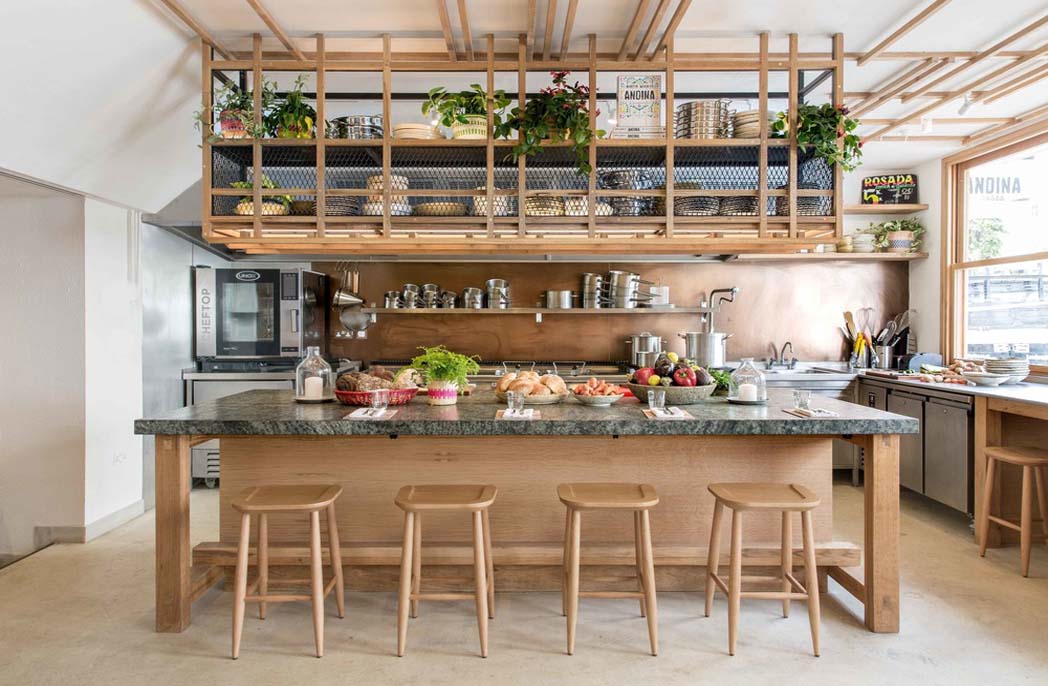
The façade
From the outside, the façade of Andina Notting Hill is a modern interpretation of the layering of traditional Cuzco buildings where plinth in stone has been replaced with terracotta and the upper part made of white plaster. Like in the design of the interior, the vibrant sign is the only element disconnecting the bright finish and giving a bit of colour to the façade.
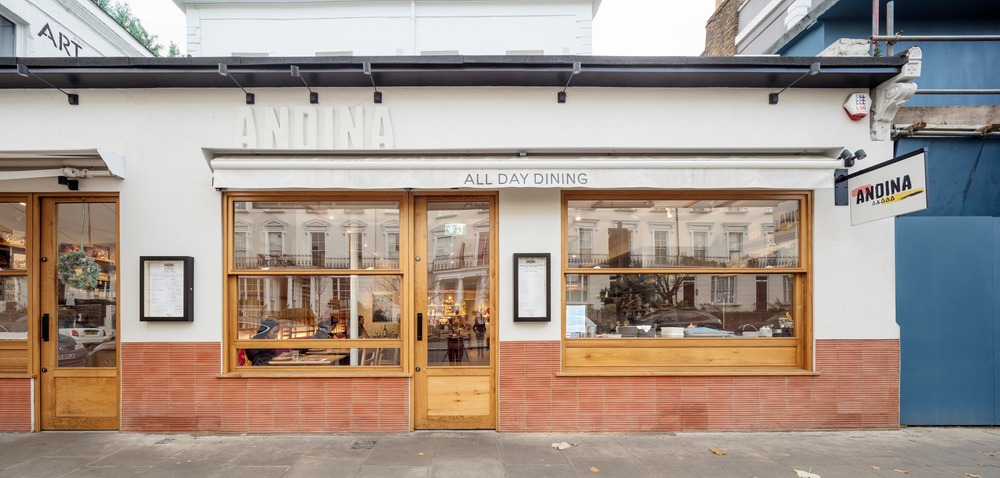
Photography by Adrià Goula
















